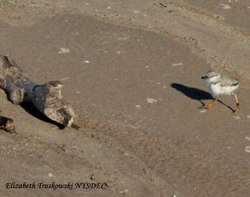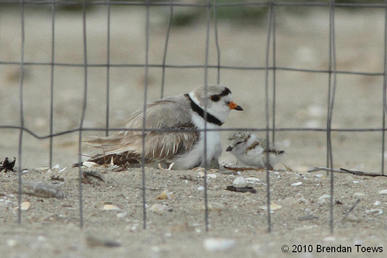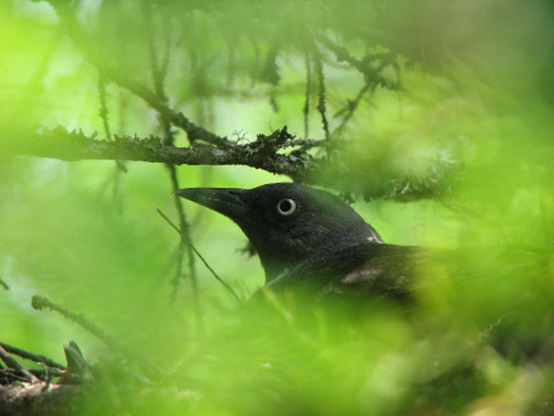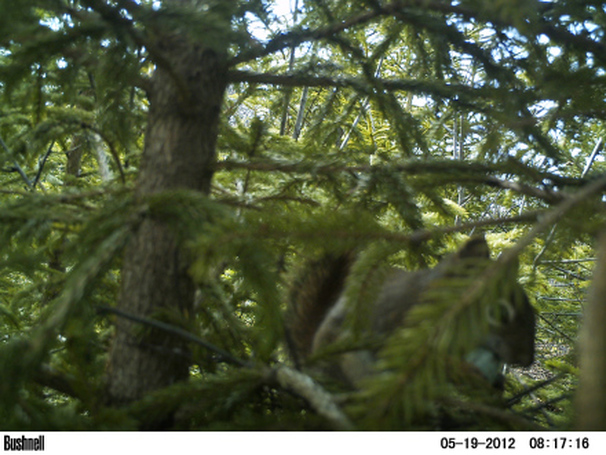|
Photo: Shannon Buckley Luepold A collaborative study among SUNY ESF, the Maine Department of Inland Fisheries and Wildlife, and New Hampshire Audubon has documented evidence on factors that limit the abundance and reproductive success of Rusty Blackbirds. These inhabitants of the Northern Forest of North America have experienced sharp population declines in recent decades. Timber harvest practices and predation by red squirrels have been hypothesized as causes of the decline. Shannon Buckley Luepold, who received her M.S. in 2013, led the project which was recently published in The Condor. Dr. Cohen served on Shannon's committee and was a co-author on the study. Shannon spent two field seasons in the Maine wilderness searching for nests of this elusive species during her time at ESF. She demonstrated the importance of small conifers and low canopy closure for nest site selection, and did not find evidence that nests in harvested stands experienced reduced nest survival. However, blackbird nests survived at a higher rate with increasing forest stand basal area, implying that pre-commercial thinning could be detrimental for Rusty Blackbird populations. She also found red squirrels to be the most common source of nest depredation in a year following high mast production. Shannon's research has been highlighted by The Wildlife Society and BirdwatchingDaily. Photo: Shannon Buckley Luepold
 Each piping plover chick received colored legbands that identify the location where they hatched. The chick pictured here is 6 days old. Each piping plover chick received colored legbands that identify the location where they hatched. The chick pictured here is 6 days old. By the early 1980's, habitat loss, human disturbance, and increasing predator populations combined to make the beaches of the Great Lakes unsuitable for nesting by the piping plover. The entire region contained only 16 nesting pairs when the species was placed under the protection of the Endangered Species Act in 1985, and after 1984 the species completely disappeared from Lake Ontario except during migration. Thanks in large part to conservation efforts led by Dr. Francie Cuthbert at the University of Minnesota, there are now 70 nesting pairs in the Great Lakes and piping plovers are starting to expand into deserted portions of their former range. In 2015, for the first time in 31 years, piping plovers nested on the shores of Lake Ontario. Under the protection of the New York DEC, two eggs hatched at the eastern end of the Lake and one of the young survived the dangerous 25 days from hatching until first flight. At the invitation of Dr. Cuthbert and the DEC, Dr. Cohen and members of his lab placed colored legbands on the chicks. We will now be able to identify the fledgling when, hopefully, it has a nest of its own. In this way, the growth of the recovering Great Lakes population can be tracked and further opportunities to protect habitat can be identified. Lab members participate in structured decision making workshop for Piping Plover management1/8/2014
 Source: naturecanadablog.blogspot.com Source: naturecanadablog.blogspot.com In December, Dr. Cohen and grad student Alison Kocek participated in a structured decision making workshop at the National Conservation Training Center in Shepherdstown, West Virginia focused on the use of nest exclosures for management of the federally-threatened Atlantic Coast piping plover. Exclosures are a common management technique for preventing predation of eggs, but some predators may use them to trap and kill nesting adults, or may harass adults leading to abandonment of the nest. The workshop was attended by three ecological modelers from the U.S. Geological Survey and several biologists and wildlife managers from Maine to Maryland. The participants built a population model for the piping plover, to serve as a basis for understanding the tradeoff in population growth rate between reduced egg predation and increased abandonment and adult mortality due to exclosures. The workshop team completed a prototype model, identified optimal decisions for exclosure use under different values for the model parameters, and set forth a plan for addressing uncertainties in the model that included presentation of the prototype to a wider audience for review and feedback. |
Categories
All
Archives
July 2019
|


 RSS Feed
RSS Feed
